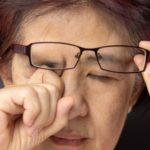Innovative Study Advances to Critical Phase in Evaluating Light Therapy for Parkinson’s Disease
PhotoPharmics, a leader in neurodegenerative disease phototherapy, today announced the enrollment of the first 100 subjects in its Light for PD clinical trial. This marks a significant milestone in evaluating Celeste, the company’s FDA Breakthrough light therapy device for Parkinson’s disease (PD). Organizers are on track to enroll 300 subjects—interested individuals with PD may find details at lightforpd.com.
The Light for PD trial is a randomized, double-blind, placebo-controlled study that aims to demonstrate safety and significant improvement in motor and non-motor symptoms beyond current medical care in PD. Parkinson’s disease happens when the brain can no longer regulate essential signaling for movement and other function. Recent discoveries implicate the eyes as part of this signaling process. Celeste passively delivers specific wavelengths of light aimed to restore retinal signaling, improving function and quality of life for those living with PD.
“We are thrilled to reach this important milestone,” said Kent Savage, CEO of PhotoPharmics. “We are grateful for the team at the University of Rochester’s Center for Health + Technology (CHeT) and the movement disorder neurologists across the country who are enrolling and caring for trial participants. We believe our passive and non-invasive specialized phototherapy device will provide substantial benefits to those affected by this debilitating disease.”
“We are delighted to reach this milestone in the Light for PD trial, which represents a significant step forward in exploring innovative treatments for Parkinson’s disease,” said Dr. Ray Dorsey, Professor of Neurology at URMC and lead investigator for the trial. “This study leverages cutting-edge phototherapy to potentially improve motor and non-motor symptoms, offering new hope to patients. The collaboration with PhotoPharmics and the dedication of the participants underscores the importance of advancing research to find effective solutions for neurodegenerative diseases.”
About the Light for PD Clinical Trial
Participants use the Celeste device one hour daily during activities such as reading, eating, or watching TV. This passive, non-invasive therapy complements existing medical treatments without requiring changes to current medication regimens. The trial’s at-home, telemedicine-based format enhances accessibility and convenience, allowing broader participation, including individuals in remote areas.
The primary endpoints of the study include improvements in overall quality of life, motor function, sleep quality, mood, and cognition, measured through clinical scales and patient-reported outcomes. Preliminary research and early-phase studies have shown promising results, indicating that specialized phototherapy can significantly impact PD symptoms without major side effects. This innovative approach could offer a new, non-invasive treatment option, providing relief and enhancing daily life for PD patients.
“We are committed to advancing the application of specialized phototherapy for neurodegenerative diseases,” said Dan Adams, Science Officer at PhotoPharmics. “Our focus is understanding the impact of retinal deterioration in these diseases and developing non-invasive treatment options to improve quality of life and potentially slow disease progression.”
Commitment to Innovation
PhotoPharmics is dedicated to pioneering new medical treatment frontiers by deeply understanding specialized light’s therapeutic potential. The company’s proprietary technologies are grounded in rigorous scientific research and clinical validation, ensuring each product meets the highest efficacy and safety standards.
As the Light for PD trial progresses, PhotoPharmics remains focused on transforming the treatment landscape for Parkinson’s disease. The company is also exploring its light therapy technology for other neurodegenerative diseases, such as Alzheimer’s and Huntington’s disease.
“We are excited about the prospects of expanding our light therapy technology to other conditions,” said Savage. “Our goal is to bring safe, effective, and innovative treatments to patients in need, enhancing their quality of life and providing new hope in the management of neurodegenerative diseases.”
About CHeT
The Center for Health + Technology (CHeT) is a clinical research organization within the University of Rochester. Their team designs and conducts multi-center clinical trials with collaborators from across the globe to accelerate clinical research and advance the development of therapeutics, benefiting individuals in our community and beyond. Since its inception over three decades ago, CHeT has reshaped the conduct of clinical trials, from incorporating novel technologies into clinical trial design to modeling disease progression. Learn more at https://www.urmc.rochester.edu/health-technology.aspx.
About PhotoPharmics
PhotoPharmics is a privately held, clinical-stage medical device company developing next-generation treatments for treating neurodegenerative disorders through the eyes. Company founders have 30+ years of research and experience in this field. They previously developed specialized light solutions now widely used to regulate circadian rhythms for seasonal affective disorder, sleep disorders, anxiety, and depression (acquired by Philips-Respironics in 2007).
Drawing from research and recent trials, PhotoPharmics is developing applications of specialized light across several neurodegenerative diseases. The company aims to make a clinically meaningful difference in patient’s lives by delivering safe and effective treatments. Learn more at www.photopharmics.com.





